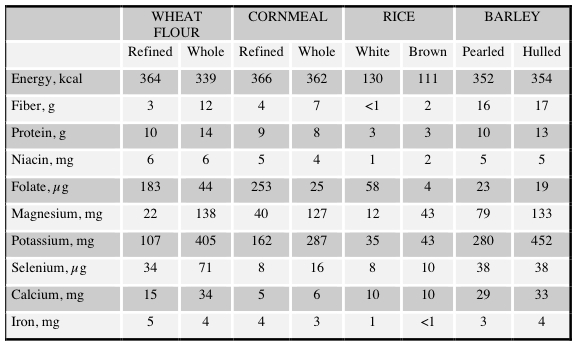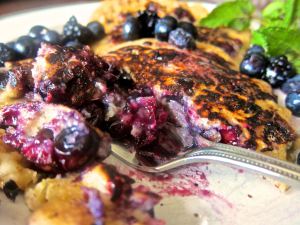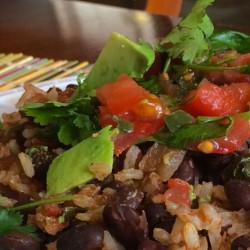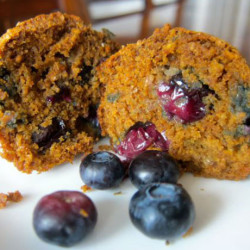Thursday, October 6, 2011
Learn the reasons behind why going whole grain is the better choice for your health.
I’ve discussed whole grains in a number of my posts in the past few weeks, including a sublime summer tomato sandwich and raspberry pancakes, for example. The topic was a big part of my piece comparing the USDA’s MyPlate to Harvard’s Healthy Plate and came up again this week in one of my classes. There remain a lot of questions on the topic, so it seemed a good idea to take some time to define whole grains, show why they’re better for you, summarize why it matters, and help you identify some good food choices.
Indeed, whole grains have become quite the buzz word in nutrition in the past decade or so. Whenever that happens, the food industry jumps on the opportunity to put new products on the supermarket shelves. This has advantages and disadvantages. On one hand, you have more choices than ever in trying to get more whole grains into your diet. And you should, a point I’ll return to shortly. On the other hand, foods that contain whole grains don’t necessarily mean they’re healthy. Breakfast cereals and granola bars are often made with whole grains, for example, but are still loaded in sugar. Finally, you can’t assume a food is whole grain just by its color. (Insert your favorite metaphor here about looking beneath the surface, appearances can be misleading, you can’t judge a grain by its color—whatever works for you.) Yes—GASP!—you need to actually read the ingredients to sort it out.
First things first. Grains like wheat, corn, oats, and rice are the fruit or seed of cereal grasses. A “whole grain” is, er, the whole grain, which means it includes all parts of the plant: bran (outer fibrous layer), germ (reproductive organ, rich in polyunsaturated fats, vitamins, and minerals), and endosperm (starchy interior, the energy source for the grain. Refined grains have removed the bran and/or germ and in so doing have eliminated many of the valuable vitamins, minerals, and phytonutrients. The most familiar refined grains are your common white flour and white rice, and all the things you buy that include them (such as breakfast cereals, cookies, crackers, bread, pasta, and so forth). Americans eat a lot of refined grains because they are a major ingredient in so many foods and our palates have been trained to prefer the milder taste they impart.
Does this really matter? Well, yes, yes it does, if you are concerned with making a healthier choice. Whole grains are, quite simply, much more nutrient-dense. For the quantitative among you, see the table below, which is reproduced from one of my research articles.
Table. Nutrient Differences: Whole vs. Refined Grains (per 100 gram serving)

Source: USDA, Agricultural Research Service, 1997.
In case your eyes just glazed over, here’s a little whole grain help. I included a few different grains to remind you that the improved nutrient content occurs across all grains. (Note that I’m just showing a few key nutrients; there are others.) Also remember from my pancake post that whole wheat flour can be made either from red wheat (traditional whole wheat flour, brownish in hue) or white wheat (whiter and milder in color and flavor). Both are whole grains, and nutrient composition is pretty much identical. Some of the nutrient values for the refined foods are higher than those for the whole grain variants, you might notice. Those products are “enriched,” which means that naturally occurring nutrients lost when the bran and germ were removed have been added back to restore them.
Given the higher nutrient content. it should come as no surprise that whole grains have been associated with lower risks of cardiovascular diseases, some cancers, obesity, and type 2 diabetes as well as more favorable blood pressure, cholesterol, glucose, insulin, and gastrointestinal health. Conversely, eating refined grains has the reverse effect in part due to the quick metabolism to glucose in the body, followed by a surge in insulin.(This is the concept of “glycemic index” or “glycemic load” you might have heard about.) You might experience this as the burst of energy you get from eating a highly refined food followed by a drop in energy as your blood glucose falls quickly. You get more sustained energy from whole grains, which are metabolized more slowly due to their fiber content. They also make you feel fuller (read: you’ll consume fewer calories at a given meal).
There are other biological pathways, too, that help explain the health effects of grains, both refined and whole. But foods are complex things, and scientists are always discovering new things about what makes them so good for you and how they impact the body. It’s because of these unknowns, and the fact that nutrients work together synergistically in the body, that consuming whole foods is always best. In other words, even if white flour has been enriched to add back some of what was lost, we can’t know all that was eliminated, so best to consume the whole grain. The whole is greater than the sum of its parts, we often see in nutrition.
So what should you eat? Oatmeal and popcorn are two familiar whole grain foods, and you may have heard of millet and bulgur (used to make tabouleh). Buckwheat, wild rice, and quinoa aren’t actually grains botanically speaking but they have similar culinary uses and nutritional properties so are generally considered as such. For prepared and processed products like bread, breakfast cereal, and pasta, read the ingredients: the first word needs to say “whole” (e.g., whole wheat flour, whole oat flour, whole grain rice, etc.). The USDA website has some good additional tips here and there to help you make at least half of your grains whole. (Ideally, it would be 100%. That said, I find that I sometimes desire the textures or flavors of refined white flour, be it a fresh French baguette or fine French pastry.) A whole grain stamp appears on some products, so that can also help provided it doesn’t distract you from other less healthy ingredients. Commonly used terms that identify refined grain foods are bleached flour, unbleached flour, wheat flour, enriched flour, semolina, 100% pure durum semolina, organic unbleached flour, multi-grain (depending on the ingredients), pearled barley and degermed corn meal.
For more tasty recipes involving whole grains of all kinds, search my recipe page or search “whole grains” directly. It’s a good idea to try and include more whole grains in your diet. Over time, your palate will appreciate the more interesting flavors and textures and your body will enjoy the health benefits now and in the future.
P.S. While writing this post, I munched on a bowl of popcorn. And I didn’t add any butter or salt. Yup, that’s my story, and I’m sticking to it.
—
Learn more about nutrition scientist and food personality Dr. P.K. Newby, and check out her newest book. You can also follow her on FB, where she is much more active than on this blog. Or, click here if you just want to ogle food porn featuring plant-based, globally-inspired cuisine.






Do you have any recommendations for people who are interested in whole grains but who have a problem with gluten? Good article, by the way.
Thanks for the question and the like on FB, John! I really appreciate it! Rice does not contain gluten (so rice pasta makes a good substitute for pasta, for example, though it’s not exactly the same texture – stickier – it works). There are other gluten-free whole grains, too. The Whole Grains Council is a great resource. I hope this helps! And thanks for the kind words. 🙂